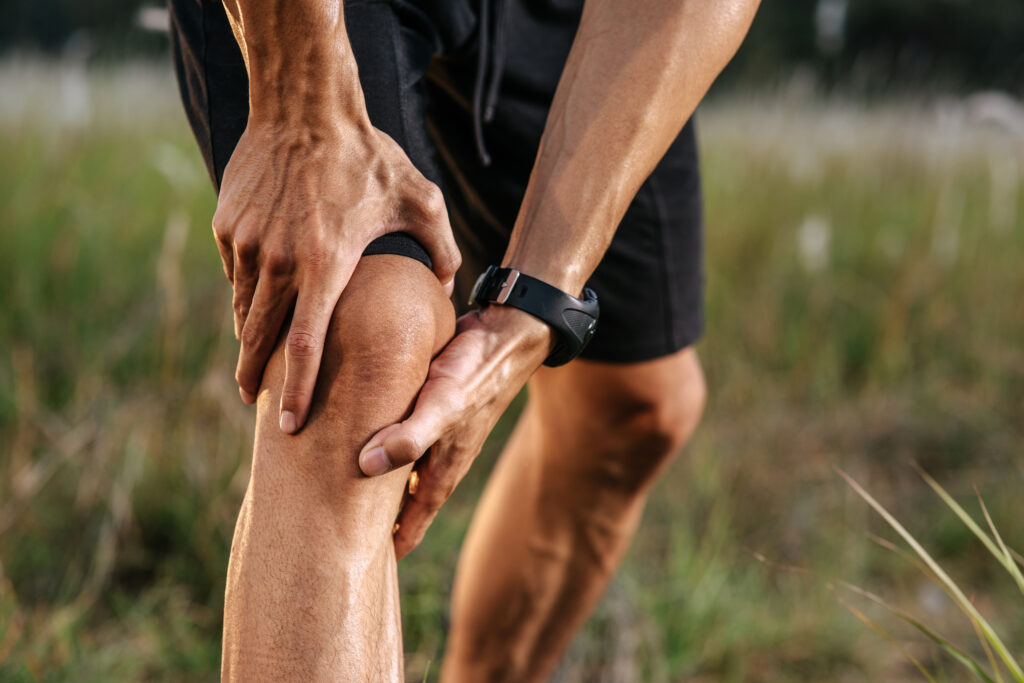When it comes to maximizing your athletic potential, recovery often takes a backseat to training intensity. You might think that pushing harder is the key, but without proper recovery, your performance can actually suffer. It's vital to prioritize a few key strategies that can make a significant difference in how quickly you bounce back and improve. From sleep to nutrition, understanding the fundamentals of recovery can set you apart from the competition. Let's explore these tips and discover how they can elevate your game.
Prioritize Sleep Quality
Sleep is the cornerstone of effective recovery for athletes. When you prioritize sleep quality, you're setting yourself up for improved performance, faster recovery, and better overall health. During sleep, your body repairs muscle, synthesizes proteins, and releases hormones essential for growth and recovery. If you neglect this essential process, you risk hampering your progress.
To enhance your sleep quality, create a consistent sleep schedule. Go to bed and wake up at the same time every day, even on weekends. This helps regulate your body's internal clock, making it easier to fall asleep and wake up feeling refreshed. Aim for 7-9 hours of sleep each night, adjusting as needed based on how your body feels.
Your sleep environment also plays a significant role. Keep your bedroom cool, dark, and quiet. Invest in a comfortable mattress and pillows to support restful sleep. Avoid screens and bright lights an hour before bedtime, as they can interfere with melatonin production. Instead, consider a relaxing pre-sleep routine, like reading or stretching.
Mind your nutrition too; heavy meals close to bedtime can disrupt your sleep. Opt for light snacks if you're hungry before bed, favoring options that promote sleep, like almonds or bananas.
Finally, manage stress effectively. Techniques like mindfulness or deep-breathing exercises can help calm your mind and prepare your body for a restful night.
Hydrate Effectively
Recovery doesn't stop with quality sleep; hydration plays an essential role in how well your body bounces back from training and competition. When you train hard, you lose fluids through sweat, and if you don't replenish them, your performance and recovery can suffer. Staying adequately hydrated helps maintain ideal bodily functions, including nutrient transport and muscle recovery.
To hydrate effectively, start by drinking water before, during, and after your workouts. Aim for at least 16-20 ounces of water two hours before exercising. During your workout, sip on water or an electrolyte drink, especially if you're sweating heavily.
After your session, replace lost fluids by consuming 24 ounces of water for every pound you've lost during exercise.
Pay attention to your body's signals. Thirst can be a good indicator, but it's best to drink consistently throughout the day. If your urine is pale yellow, you're likely well-hydrated. Darker urine can signal dehydration, so make adjustments as necessary.
Don't forget about the role of food in hydration. Foods like fruits and vegetables have high water content and can help you stay hydrated. Incorporating these into your meals can be an easy way to boost your fluid intake.
Incorporate Active Recovery
While you might think rest means complete inactivity, incorporating active recovery can actually enhance your rehabilitation process. Active recovery involves low-intensity exercises that promote blood flow and help your muscles recover without adding too much strain. Instead of lounging on the couch, consider engaging in activities like walking, swimming, or cycling at a leisurely pace. These movements can help flush out lactic acid and reduce soreness, allowing you to bounce back faster.
You might wonder when to fit active recovery into your routine. It's best to include it on days following intense workouts or competitions. For example, after a heavy training session, take a day to focus on gentle movement, which can rejuvenate your body and mind. You'll likely find that this approach helps you maintain your fitness levels while giving your muscles the break they need.
Listening to your body is essential. If you feel fatigued or experience pain, adjust your active recovery activities accordingly. You can also try incorporating mobility exercises or yoga into your routine. These practices enhance flexibility and can be a soothing way to promote recovery.
Focus on Nutrition
After you've engaged in active recovery, don't underestimate the power of nutrition in your overall recovery strategy. Proper nutrition fuels your body, aids in muscle repair, and replenishes energy stores. To optimize your recovery, focus on consuming a balanced diet rich in proteins, carbohydrates, and healthy fats.
Right after your workout, aim to consume a meal or snack that combines protein and carbohydrates. This combination helps kick-start muscle recovery and replenish glycogen stores. For instance, a smoothie with protein powder, banana, and spinach or a turkey sandwich on whole-grain bread can be excellent choices.
Don't forget about hydration, either. Water is essential for maintaining performance and aiding recovery. Consider adding electrolytes if you've had an intense session or sweat excessively.
In the days following your workouts, continue to prioritize nutrient-dense foods. Incorporate plenty of fruits and vegetables for vitamins and minerals. Lean proteins like chicken, fish, or plant-based sources like beans and lentils will help repair your muscles. Healthy fats from avocados, nuts, and seeds can also support your overall health and recovery.
Lastly, pay attention to your meal timing. Eating regular meals and snacks throughout the day can keep your energy levels stable and support your recovery process.
Utilize Recovery Tools
Incorporating recovery tools into your routine can greatly enhance your post-workout healing process. These tools help reduce soreness, improve circulation, and promote faster recovery. By integrating them into your regimen, you'll find yourself feeling fresher and ready to tackle your next workout.
One effective tool is a foam roller. Rolling out tight muscles can alleviate tension and improve flexibility. Spend a few minutes on each major muscle group, focusing on any areas that feel particularly knotted. This self-myofascial release technique can make a significant difference in your recovery.
Another useful tool is compression gear. Wearing compression socks or sleeves during and after exercise can increase blood flow and reduce swelling. This aids in quicker recovery, allowing you to get back to your training sooner.
Don't overlook the benefits of massage therapy. Whether you opt for a professional massage or use a massage gun at home, targeting sore spots can help break down muscle knots and improve overall muscle function.
Additionally, consider using ice baths or contrast baths. These can reduce inflammation and speed up recovery by improving circulation. If you prefer heat, try using heating pads or warm baths to relax your muscles after intense workouts.
Lastly, invest in a quality sleep mask or eye pillow. Sleep is essential for recovery, and minimizing light can help you achieve deeper, more restorative rest.
Conclusion
By prioritizing sleep, staying hydrated, incorporating active recovery, focusing on nutrition, and using recovery tools, you'll boost your athletic performance and enhance recovery. These strategies aren't just tips; they're essential practices for any athlete looking to improve. Remember, every small effort counts toward your overall well-being and success. So, implement these techniques consistently, and watch your performance soar while reducing recovery time. Your body will thank you for it!



